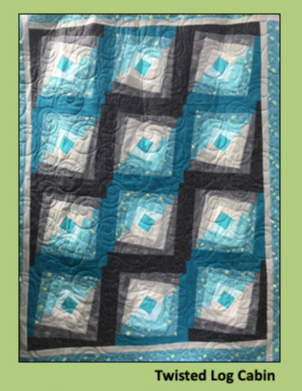“I’ve embarked on personal adventures with each of these quilts.”
- Patricia Belyea, East-Meets-West Quilts

There are many different styles of quilts. The motivation behind the design of each style can be vastly different, as is often the history and the materials and fabrics used. Just like any other craft or art form, there are numerous styles of quilting, and they each offer their own unique looks.
Amish Quilts

These quilts are reflections of the Amish way of life. As a part of their religious commitment, Amish people have chosen to reject “worldly” elements in their dress and lifestyle, and their quilts historically reflected this, although today Amish make and use quilts in a variety of styles.
Traditionally, the Amish use only solid colors in their clothing and the quilts they intend for their own use, in community-sanctioned colors and styles. In Lancaster, Pennsylvania, early Amish quilts were typically made of solid-colored, lightweight wool fabric, off the same bolts of fabric used for family clothing items, while in many Midwestern communities, cotton predominated.
Classic Amish quilts often feature quilting patterns that contrast with the plain background.
Antique Amish quilts are among the most highly prized by collectors and quilting enthusiasts. The color combinations used in a quilt can help experts determine the community in which the quilt was produced.
Since the 1970s, Amish quiltmakers have made quilts for the consumer market, with quilt cottage industries and retail shops appearing in Amish settlements across North America.
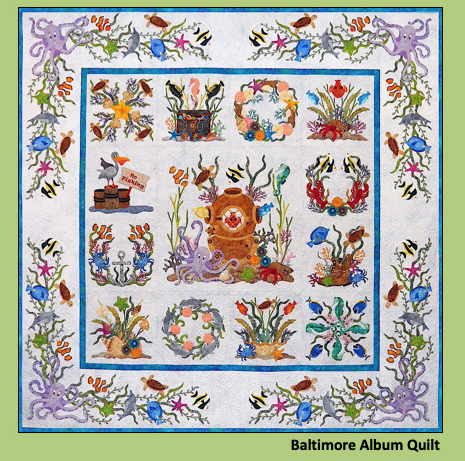
Album Quilts
Album quilts are collections of appliquéd blocks, each with a different design. These designs often feature floral patterns, but many other motifs are used as well. Baskets of flowers, wreaths, buildings, books, and birds are common motifs.
Baltimore Album Quilts
Baltimore album quilts originated in the region around Baltimore, Maryland, in the 1840s, where a unique and highly developed style of appliqué quilting briefly flourished. They have become one of the most popular styles of quilts and are still made today.
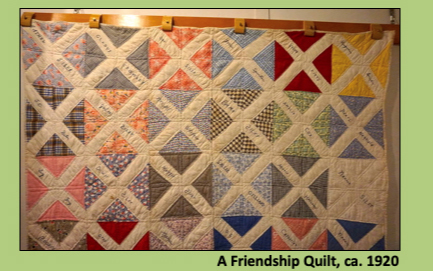
Autograph Quilts There are two distinct kinds of autograph quilts. Single pattern quilts are often referred to as “friendship quilts” while the more formal quilts made of different blocks are called “sampler album quilts.”
Most 19th-century signatures were written with indelible ink, while in the 20th century they were often embroidered. Occasionally, one person chosen for her beautiful handwriting would inscribe all the signatures. Some regional signature quilts were inscribed in the fraktur calligraphy used to document important events by the Pennsylvania Germans.

Pictorial Quilts Pictorial quilts often contain one-of-a-kind patterns and imagery. Instead of bringing together fabric in an abstract or patterned design, they use pieces of fabric to create objects on the quilt that results in a picture.
These quilts were often made collaboratively as a fundraising effort. However, some pictorial quilts were individually created and tell a narrative through the series of images on the quilt.
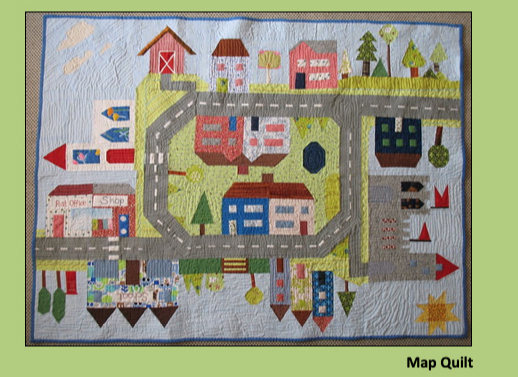
Map Quilts A Map Quilt is essentially a Pictorial Quilt that serves as a map. This might be a map of the states or a counties within a state or the buildings of a town or even a treasure map.
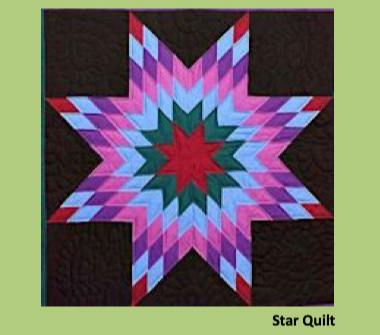
Native American Star Quilts
Star Quilts are a Native American form of quilting that arose among native women in the late 19th Century as communities adjusted to the difficulties of reservation life and cultural disruption. They are made by many tribes, but came to be especially associated with Plains tribes, including the Lakota.
While star patterns existed in earlier European-American forms of quilting, they came to take on special significance for many native artisans. Star quilts are more than an art form—they express important cultural and spiritual values of the native women who make them.
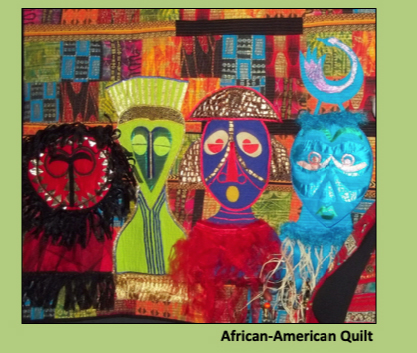
African-American Quilts
In the 1980s, concurrent with the boom in art quilting, new attention was brought to African-American traditions and innovations. This attention came from two opposing points of view, one validating the practices of rural Southern African-American quilters and another asserting that there was no one style but rather the same individualization found among white quilters.
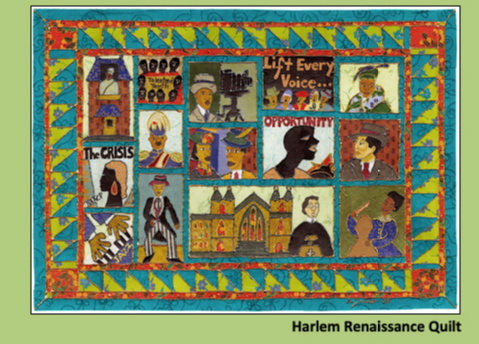
Harlem Renaissance Quilts The Harlem Renaissance was an intellectual, social, and artistic explosion centered in Harlem, New York, spanning the 1920s. At the time, it was known as the “New Negro Movement” The art and textiles from this movement were extraordinary.
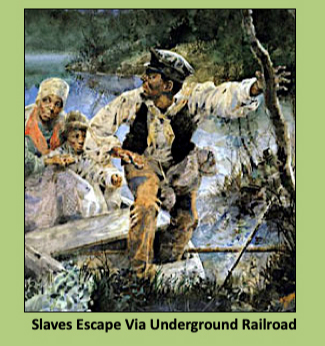
Underground Railroad Quilts
During the Civil War many Indiana residents supported the Underground Railroad, a system for helping slaves escape their bondage in the South. Some say African American slaves used a “quilt code” to navigate the route of the Underground Railroad. Quilts with patterns named “Wagon Wheel,” “Tumbling Blocks,” and “Bear’s Paw” appear to have contained secret messages that helped direct slaves to freedom.
Other Quilt Styles
The variety of quilt styles around the world includes Hawaiian, Seminole, Provençal, Italian, Sashiko, Bangladeshi, Sindhi Ralli, Tivaevae, Egyptian Khayamiya, and Kuna Mola textiles.
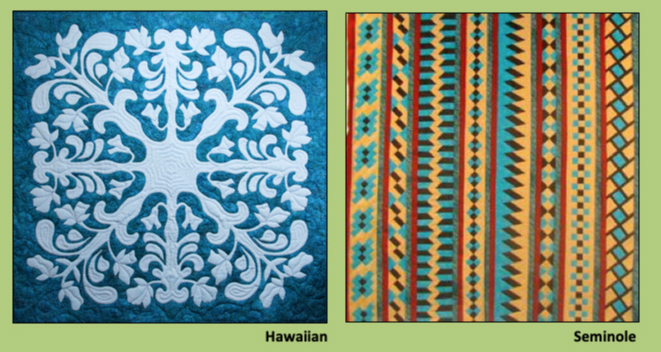

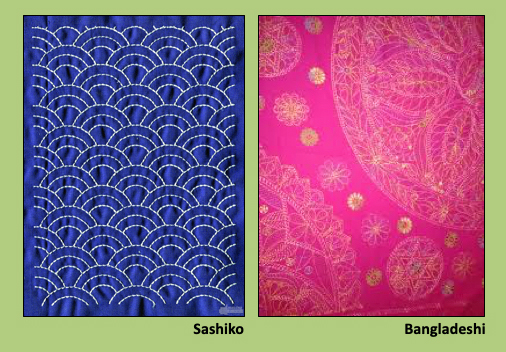
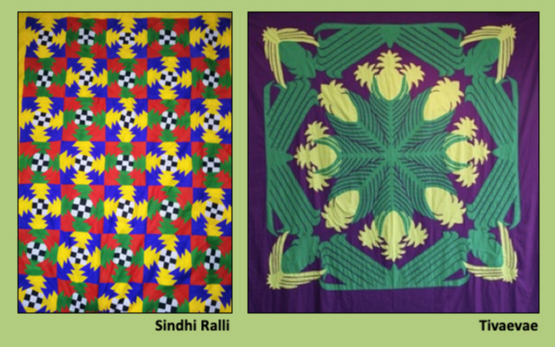
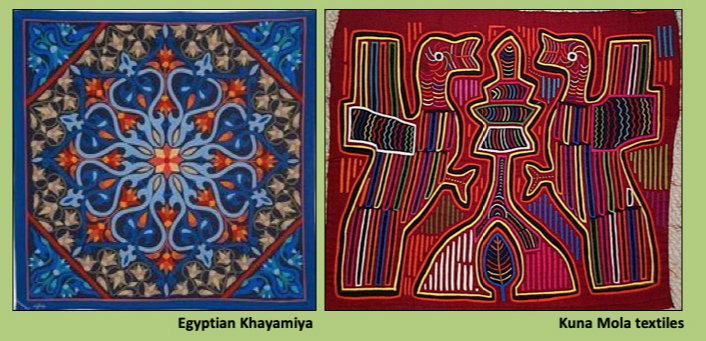
Names of Traditional Quilts
Patchwork Quilts
Three traditional structures are used to construct a patchwork or pieced composition: 1) the block, 2) overall, and 3) strip piecing. Traditional patchwork has identifying names based on the arrangement of colors and shapes.
The quilt block is traditionally a sub-unit composed of several pieces of fabric sewn together. The quilt blocks are repeated, or sometimes alternated with plain blocks, to form the overall design of a quilt.
There are many traditional block designs and techniques that have been named. Log Cabin Quilts are pieced quilts featuring blocks made of strips of fabric, typically encircling a small centered square (traditionally a red square, symbolizing the hearth of the home), with light strips forming half the square and dark strips the other half. Dramatic contrast effects with light and dark fabrics are created by various layouts of the blocks when joined to form a quilt top. These different layout variations are often named; some layouts include Sunshine and Shadow, Straight Furrows, Streak of Lightning, and Barn Raising.
Examples:

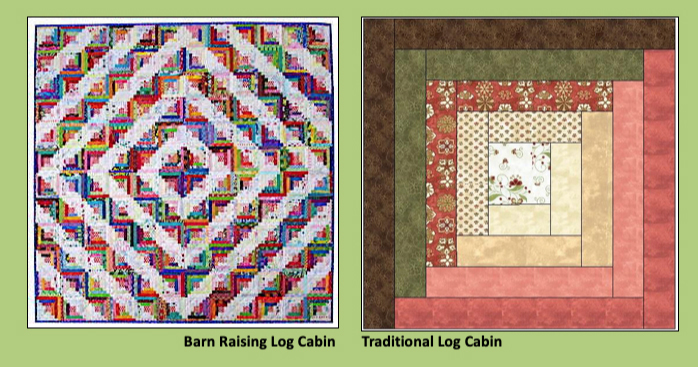
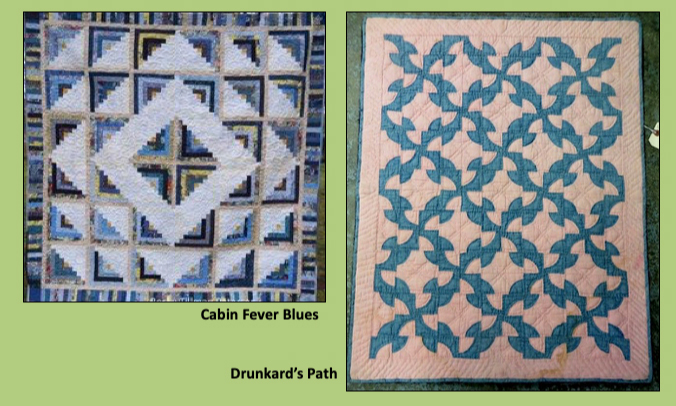
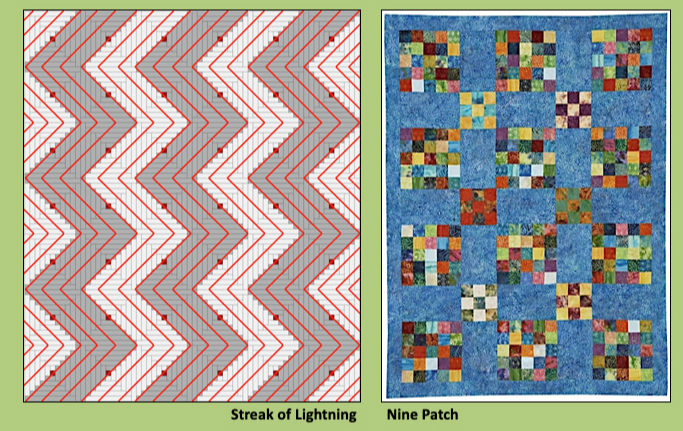
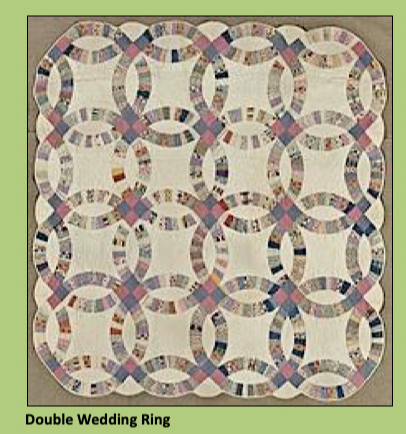
There are many variations on each of these designs. For example, the Log Cabin Quilt takes on many permutations, ranging from a Log Cabin Heart to a Star Center Log Cabin to a Courthouse Steps Log Cabin to a Twisted Log Cabin. A Log Cabin Quilt is one of the simplest and easiest designs you can make, perfect for a beginning quilter.
Occasionally the quiltmaker’s name was attached to her handiwork, such as “Mrs. Morgan’s Choice,” “Sarah’s Favourite,” “Aunt Sukey’s Patch,” and “Aunt Eliza’s Star Point.”
Quilt Blocks
Three traditional structures are used to construct a patchwork or pieced composition: 1) the block, 2) overall, and 3) strip piecing. Traditional patchwork has identifying names based on the arrangement of colors and shapes.
The quilt block is traditionally a sub-unit composed of several pieces of fabric sewn together. The quilt blocks are repeated, or sometimes alternated with plain blocks, to form the overall design of a quilt.
There are many traditional block designs and techniques that have been named. Log Cabin Quilts are pieced quilts featuring blocks made of strips of fabric, typically encircling a small centered square (traditionally a red square, symbolizing the hearth of the home), with light strips forming half the square and dark strips the other half. Dramatic contrast effects with light and dark fabrics are created by various layouts of the blocks when joined to form a quilt top. These different layout variations are often named; some layouts include Sunshine and Shadow, Straight Furrows, Streak of Lightning, and Barn Raising.
How to make a Log Cabin Quilt
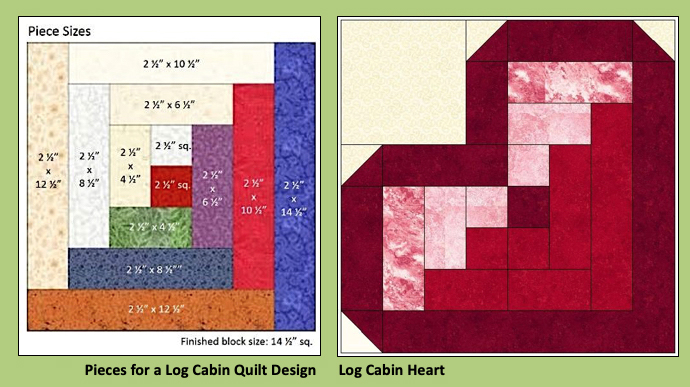

|
